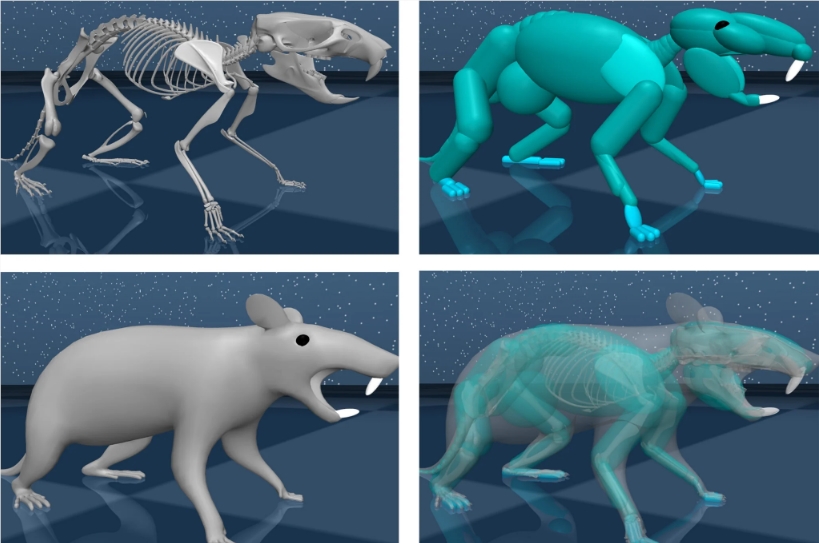Harvard University and the Google DeepMind team collaborated to use artificial intelligence technology to create an "artificial brain" that can accurately control the movement of a virtual mouse. The results were published in the journal Nature, marking a major breakthrough in the field of virtual neuroscience. The researchers used real mouse data to build a 3D model and trained the artificial neural network through DeepMind's deep reinforcement learning algorithm, so that it can accurately generate complex motion trajectories. This technology can not only imitate trained movements, but also generate new behaviors independently, and the simulation effect even "goes beyond reality."
Harvard University researchers collaborated with Google's DeepMind team to use artificial intelligence technology to create an artificial "brain" for a virtual mouse that can accurately control its movements in complex environments. This innovative breakthrough was published in the journal Nature.
The research team used real mouse data to build a biomechanically realistic 3D mouse model. DeepMind's deep reinforcement learning algorithm trains an artificial neural network (ANN) brain for the model, allowing it to accurately generate various complex motion trajectories and forces through the inverse dynamics model.

Source: Google DeepMind
This virtual brain can not only imitate trained actions, but can also autonomously generate new behaviors that have never been trained before. Its simulation effect can be called "beyond reality". Project leader Ölveczky said that DeepMind's technology provides strong support for complex simulations and is the key to the breakthrough progress of this cooperation.
The research opens up new avenues for exploring the neural circuits responsible for complex animal behavior. By analyzing the operating patterns of artificial intelligence brains, scientists can gain insights into the operating principles of real biological brains. This innovative simulation method is also expected to be applied in the design of advanced robot control systems.
Even more exciting is that this may create a new field of "virtual neuroscience". In the future, artificial intelligence simulated organisms may become transparent experimental models for studying normal and diseased brains, provide unprecedented insights, and even bring new strategies for the treatment of neurological diseases.
Based on the current results, the next step is to give the virtual mice more autonomy, simulate the process of learning new skills, and further explore the mystery of the brain's ability to acquire complex behaviors. By continuing to improve this method, neuroscience and artificial intelligence research will surely lead to new revolutionary advances.
This research has brought revolutionary progress to the fields of neuroscience and artificial intelligence, providing a new direction for understanding the operating mechanism of the brain and treating neurological diseases by simulating the real biological brain. In the future, this technology is expected to be applied in more fields and bring greater breakthroughs to scientific research and technological development.